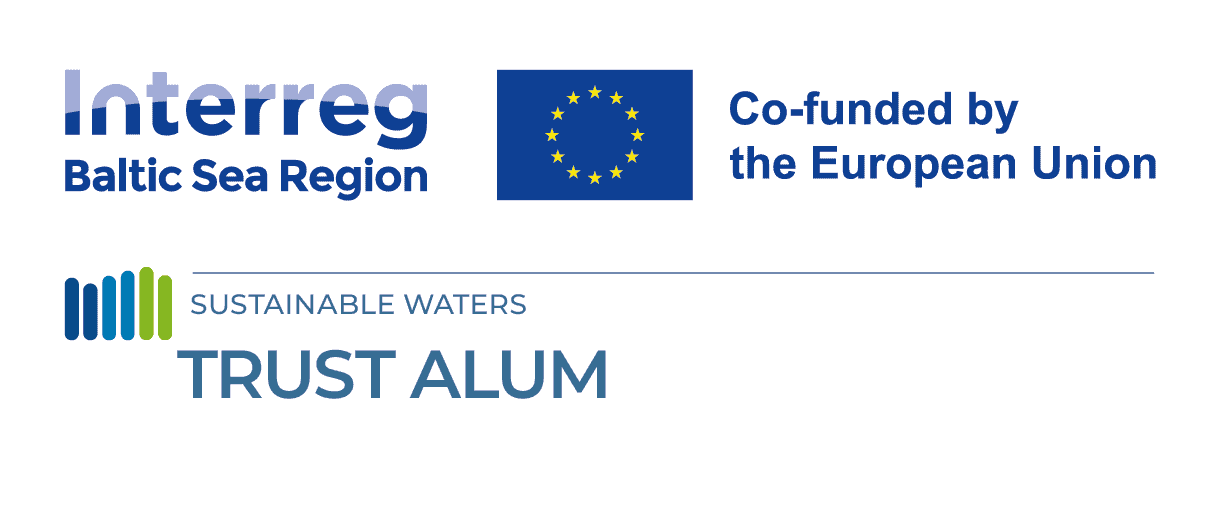
TRUST ALUM: Strengthening Stakeholder Engagement in Estonia and Latvia
18 February 2025
On February 12, 2025, the TRUST ALUM project successfully hosted national stakeholder events in both Estonia and Latvia, bringing together policymakers, researchers, and local authorities to discuss the ALUM method – a proven but often misunderstood approach to improving lake water quality. In total we gathered more than 4o participants online and had great discussions.
The aim of the meeting was:
- to introduce to the Expertise linking hub – a set of valuable materials developed to navigate whole ALUM water treatment process in Baltic countries.
- Q&A to raise trust in method’s safety and effectiveness.
- to gather feedback and shape Toolbox – the final set of materials aimed to support Baltic countries in upscaling ALUM water treatment to national scale.
Explore presentations here:
In Latvian
In Estonian TrustAlum_webinar
In Estonia, the national webinar was organized by the partner SEI Tallinn and gathered >20 representatives from the Ministry of Climate, the Environmental Board, municipalities, and leading research institutions. Experts shared insights on the first-ever ALUM treatment in the Baltic region, discussing scientific findings, regulatory aspects, and best practices for implementation. Key topics included phosphorus binding, treatment impact on aquatic life, and long-term monitoring strategies.
In Latvia, the national webinar was organized by the partners Latvian Institute of Aquatic Ecology, Ministry of Climate and Energy, State Environmental Service and Riga City Council. We gathered >20 stakeholders from the Agricultural Ministry, Nature Conservation Agency, researchers and municipalities that were engaged in an in-depth discussion on the first ALUM lake treatment in Baltic states – Lake Velnezers in October 2024. Participants reviewed initial results, regulatory considerations, and next steps for further applications. The event also emphasized the importance of public trust and awareness in adopting innovative water restoration methods.
On both events we had a strong support by Swedish partners – Lake Restoration Sweden Incorporated (Sjörestaurering Sverige AB), Water resources Sweden (Vattenresurs Sverige AB) and Swedish University of Agricultural Sciences. All partners were present to answer stakeholder questions and engage in discussions.
Among most frequent questions were:
-
Does vegetation need to be removed before treatment? Experts explained that if applied at the right time (early spring), plant removal is usually unnecessary.
-
What happens if the pH level drops during treatment? A slight temporary pH drop can occur, but it quickly stabilizes. If pH is too low beforehand, treatment is not recommended.
-
How does ALUM treatment impact fish and aquatic life? Water quality improvements benefit fish populations by restoring a balanced ecosystem and enhancing food availability.
-
Are there concerns about aluminum residues in water and sediments? Studies show that the method is safe and aluminum binds permanently in sediments, but further research is ongoing.
-
Can shallow or stratified lakes be treated? Treatment is possible, but shallow lakes require careful application due to sediment movement, and stratified lakes pose additional challenges for maintaining stability.
-
How can phosphorus inflow sources be tracked? A full watershed analysis is ideal, but due to costs, strategic monitoring is used to identify key phosphorus inputs.
-
Has ALUM been tested in protected nature areas? Yes, treatments have been done in protected lakes, following strict environmental guidelines to minimize ecological disturbance.
These parallel events reinforced cross-border collaboration and knowledge exchange, ensuring that science-based solutions for eutrophic lake restoration are effectively understood and implemented at the national, regional, and local levels. Stay tuned for more updates and outcomes of Lithuanian stakeholder event!





